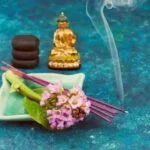Are you looking to learn how to mix essential oils for aromatherapy? Aromatherapy has been used for centuries as a holistic healing treatment, and essential oils play a crucial role in this practice. In this article, we will delve into the world of aromatherapy and essential oils, understanding their basics, choosing the right carrier oils for mixtures, popular essential oil combinations, safety considerations, and providing step-by-step guides for mixing these oils for aromatherapy.
Aromatherapy is a natural and effective way to promote healing and relaxation. By using aromatic essential oils extracted from plants, aromatherapy can positively impact physical health, emotional well-being, and mental clarity. Understanding the properties of these essential oils and how to properly blend them is key in creating effective aromatherapy treatments.
When it comes to choosing the right carrier oils for aromatherapy mixtures, it’s important to consider factors such as skin type and scent compatibility with essential oils. Different carrier oils have unique properties that can enhance or dilute the effects of essential oil blends. With the right combination of carrier oils and essential oils, you can create personalized aromatherapy mixtures that cater to your specific needs and preferences.
As we explore the popular essential oil combinations for aromatherapy and safety considerations when mixing these potent substances, you’ll gain a deeper understanding of creating your own custom blends. With our step-by-step guide on how to mix essential oils for aromatherapy, you’ll be equipped with the knowledge and confidence to embark on your journey towards natural healing through customized essential oil blends.
Understanding the Basics of Essential Oils
Essential oils are highly concentrated extracts derived from different parts of plants, such as flowers, leaves, stems, and roots. They are popular for their various therapeutic properties and are used in aromatherapy to promote physical, emotional, and psychological well-being.
When using essential oils for aromatherapy, it’s important to understand the basics of these potent oils:
- Extraction Methods: Essential oils can be extracted through methods such as distillation, expression, or solvent extraction. Each method yields different types of essential oils with unique properties.
- Properties of Essential Oils: Essential oils have distinct characteristics such as aroma, viscosity, volatility, and color. Understanding these properties is crucial when blending oils for aromatherapy.
- Shelf Life: Essential oils have varying shelf lives and can deteriorate over time due to factors like exposure to light and air. It’s important to store them properly to maintain their potency.
For those new to essential oils, it’s essential to start by learning about the different types of essential oils available and their individual properties. This knowledge forms the foundation for creating effective and safe aromatherapy blends that cater to specific needs or preferences.
Choosing the Right Carrier Oils for Aromatherapy Mixtures
When creating aromatherapy mixtures, it’s important to choose the right carrier oils to ensure the effectiveness and safety of the essential oil blends. Carrier oils are used to dilute essential oils before applying them to the skin, as they help reduce the risk of skin irritation and also aid in better absorption of the essential oils into the body. There are various carrier oils to choose from, each with their own unique properties and benefits.
One popular carrier oil for aromatherapy mixtures is coconut oil, known for its moisturizing and skin-nourishing properties. It has a light, non-greasy texture that makes it ideal for blending with essential oils for massage or skincare purposes.
Another widely used carrier oil is jojoba oil, which closely resembles the natural sebum produced by the skin. This makes it an excellent choice for those with sensitive or acne-prone skin, as it helps balance oil production and hydrate the skin without clogging pores.
For those looking for a versatile and odorless carrier oil, sweet almond oil is a popular choice. It is rich in vitamin E and other nutrients that benefit the skin, making it suitable for a wide range of aromatherapy applications. Grapeseed oil is another lightweight and easily absorbed carrier oil that is commonly used in aromatherapy blends. It has antioxidant properties and can help improve overall skin health when combined with essential oils.
When selecting a carrier oil for your aromatherapy mixtures, it’s important to consider your specific needs and preferences, as well as any potential allergies or sensitivities you may have. Experimenting with different carrier oils can help you find the perfect match for your customized essential oil blends, ensuring a safe and enjoyable aromatherapy experience.
Popular Essential Oil Combinations for Aromatherapy
Relaxation and Stress Relief
One of the most popular reasons people turn to aromatherapy is for relaxation and stress relief. Some essential oil combinations that are known to be effective for this purpose include lavender and chamomile, which both have calming properties. Another popular combination is bergamot and ylang-ylang, which are often used to promote a sense of well-being and relaxation.
Mood Enhancement
For those looking to uplift their mood, citrus oils like orange, lemon, and grapefruit are commonly used in aromatherapy blends. Combining these with a hint of peppermint can create an invigorating and uplifting scent that can help with fatigue or low spirits.
Mental Clarity and Focus
To enhance mental clarity and focus, essential oil combinations like rosemary and peppermint are often used. Both oils are believed to stimulate the mind and improve concentration. Alternatively, blends incorporating eucalyptus or pine can also have a refreshing effect on the mind, helping to clear mental fog.
When choosing essential oil combinations for aromatherapy, it’s important to consider personal preferences and any sensitivities or allergies. Experimenting with different combinations can help determine which scents work best for individual needs. Always remember to dilute essential oils properly with carrier oils before using them on the skin, and consult with a healthcare professional if you have any concerns about using essential oils.
Safety Considerations and Tips for Mixing Essential Oils
Understanding Essential Oil Safety
When it comes to using essential oils for aromatherapy, it is crucial to understand the safety considerations involved. Essential oils are highly concentrated and potent, which means that they should be used with caution.
Some essential oils can cause skin irritation or allergic reactions, while others may not be safe for use during pregnancy or for individuals with certain medical conditions. Before mixing essential oils for aromatherapy, it is important to research the specific safety guidelines for each oil you plan to use.
Dilution Ratios and Carrier Oils
One of the most important safety considerations when mixing essential oils is dilution. Essential oils are typically too strong to be applied directly to the skin, so they need to be diluted with a carrier oil before use. The recommended dilution ratio for essential oil blends used in aromatherapy is generally 2-3% for adults and even lower for children and those with sensitive skin.
Common carrier oils include jojoba oil, coconut oil, almond oil, and olive oil, among others. It is important to choose a carrier oil that is suitable for your skin type and that will complement the aroma of your essential oil blend.
General Tips for Safe Aromatherapy Blends
In addition to proper dilution and choosing the right carrier oils, there are some general tips to keep in mind when mixing essential oils for aromatherapy. Always store essential oils in dark glass bottles away from direct sunlight and heat to preserve their potency. Keep essential oils out of reach of children and pets, as they can be toxic if ingested.
When blending different essential oils together, start with small amounts and test the mixture on a small patch of skin before applying it more extensively. Lastly, always follow the recommended guidelines and do not exceed the suggested amount of drops for each essential oil in your blend.
By understanding these safety considerations and following these tips, you can ensure that your essential oil blends are not only effective but also safe for use in aromatherapy applications.
Step-by-Step Guide to Mixing Essential Oils for Aromatherapy
When it comes to mixing essential oils for aromatherapy, it’s important to follow a step-by-step guide to ensure that you create a safe and effective blend. The first step is to gather all the necessary supplies, including your chosen essential oils, carrier oils, and any other tools such as droppers or measuring cups. It’s important to work in a clean and organized space to prevent any potential contamination of your blend.
Next, you’ll want to choose the essential oils that you want to use in your blend. Consider the therapeutic properties of each oil and think about what kind of aroma you want to achieve. Once you’ve selected your essential oils, it’s time to determine the right ratio for your blend. This will depend on factors such as the strength of the individual oils and the intended use of the blend.
After determining the ratios, carefully measure out each essential oil and add them to a dark glass bottle. Be sure to label the bottle with the names of the oils used and their respective ratios. Once all the essential oils are added, fill up the rest of the bottle with your chosen carrier oil.
After capping the bottle tightly, gently roll or shake it for several seconds to thoroughly mix all the oils together. Your customized essential oil blend is now ready for use in aromatherapy practices.
Different Methods of Using Aromatherapy Blends
Aromatherapy blends can be used in a variety of ways to enjoy their therapeutic benefits. The most common methods include inhalation, topical application, and diffusion. Inhalation is one of the quickest ways to experience the effects of essential oils as the scent molecules travel to the olfactory system and stimulate the brain. This can be done by adding a few drops of the blend to a bowl of hot water and inhaling the steam, or by using a diffuser.
Topical application involves diluting the essential oil blend with a carrier oil and applying it directly to the skin. This method is great for targeting specific areas of the body or for creating massage oils. It’s important to do a patch test before applying any essential oil blend topically, as some people may have sensitivities or allergies.
Diffusion is another popular method for using aromatherapy blends, particularly in creating a calming or uplifting atmosphere within a space. A few drops of the blend can be added to a diffuser filled with water, allowing the scent to disperse throughout the room. This method is great for enhancing mood, promoting relaxation, or purifying the air.
| Method | Description |
|---|---|
| Inhalation | Quick way to experience effects; through steam inhalation or diffuser. |
| Topical Application | Diluting with carrier oil and applying directly on skin; good for massage oils. |
| Diffusion | Adding blend to diffuser with water; enhances mood and purifies air. |
Top 10 Aromatherapy Recipes for Relaxation and Stress Relief
Aromatherapy has been used for centuries as a natural way to promote relaxation and relieve stress. By using a combination of essential oils, it is possible to create customized blends that can help calm the mind and body. Here are the top 10 aromatherapy recipes for relaxation and stress relief:
1. Lavender and Chamomile: The soothing properties of lavender combined with the calming effects of chamomile make this blend perfect for promoting relaxation and reducing anxiety.
2. Bergamot and Ylang Ylang: These two oils are known for their uplifting and mood-boosting properties, making them an ideal combination for combating stress and tension.
3. Frankincense and Clary Sage: When mixed together, these oils can help create a sense of tranquility and emotional balance, making them great for stress relief.
4. Lemon and Peppermint: The invigorating scent of lemon paired with the refreshing aroma of peppermint can help uplift the mood and reduce feelings of fatigue or mental exhaustion.
5. Rosemary and Eucalyptus: This energizing blend can help clear the mind, improve concentration, and alleviate mental fatigue, making it perfect for relieving stress.
6. Geranium and Patchouli: The floral notes of geranium combined with the earthy scent of patchouli can promote relaxation, balance emotions, and reduce feelings of anxiety.
7. Sandalwood and Cedarwood: These grounding oils can help create a sense of inner peace, reduce tension, and promote deep relaxation when used in aromatherapy blends.
8. Jasmine and Neroli: Both oils have sedative properties that can help ease nervous tension, promote sleep, and alleviate feelings of restlessness or agitation.
9. Vetiver and Marjoram: The combination of these oils can help calm the mind, relax the body, and ease feelings of irritability or tension.
10. Orange and Vanilla: The sweet citrus aroma of orange combined with the comforting scent of vanilla can uplift the spirit, reduce anxiety, and promote a sense of well-being.
When using these aromatherapy recipes for relaxation and stress relief, it is important to dilute them properly with a carrier oil such as jojoba or sweet almond oil before applying them to the skin or using them in a diffuser. Always perform a patch test before using any new essential oil blend to ensure that you do not have an allergic reaction.
With proper usage, these custom essential oil blends can be an effective tool for managing stress levels in your everyday life.
Conclusion
In conclusion, the use of customized essential oil blends for aromatherapy offers a wide range of benefits for both physical and mental well-being. By understanding the basics of essential oils and choosing the right carrier oils, individuals can create personalized blends that cater to their specific needs and preferences. The popular essential oil combinations and safety considerations provided in this article serve as valuable resources for creating effective and safe aromatherapy mixtures.
Furthermore, with the step-by-step guide to mixing essential oils and different methods of using aromatherapy blends, individuals are equipped with the knowledge and skills to incorporate these blends into their daily routines. Whether it’s through inhalation, topical application, or diffusion, the versatility of aromatherapy allows for a seamless integration into one’s lifestyle.
Lastly, the top 10 aromatherapy recipes for relaxation and stress relief offer tangible examples of how customized essential oil blends can target specific concerns and provide therapeutic benefits. As more people discover the advantages of using aromatherapy as a natural solution for various health and wellness needs, it’s clear that the use of personalized essential oil blends will continue to be a valuable tool for promoting overall wellness.
Frequently Asked Questions
What Is the Ratio for Mixing Essential Oils?
The ratio for mixing essential oils will depend on the intended use and the specific essential oils being combined. For general dilution, a common ratio is 2-3 drops of essential oil per teaspoon of carrier oil.
However, this can vary based on factors such as the individual’s skin sensitivity and the purpose of the blend, so it’s important to do some research or consult with a qualified aromatherapist.
What Is the Best Carrier Oil to Mix With Essential Oils?
The best carrier oil to mix with essential oils is largely a matter of personal preference and intended use. Popular options include jojoba oil, coconut oil, almond oil, and grapeseed oil.
Each carrier oil has its own unique properties and advantages, so it’s worth experimenting to find the best match for your needs or consulting with an expert for personalized recommendations.
What Is the Best Dilution for Essential Oils?
The best dilution for essential oils will also depend on various factors including the intended use (massage, topical application, diffusing, etc.) and the specific essential oils being used.
As a starting point, a common dilution rate for adults is 2% (or 12 drops of essential oil per ounce of carrier oil), but this can be adjusted based on individual sensitivity or specific circumstances. It’s advisable to start with a lower dilution and adjust as needed based on effectiveness and any potential adverse reactions.

Are you looking for a natural way to improve your health and wellbeing?
If so, aromatherapy may be the answer for you.





